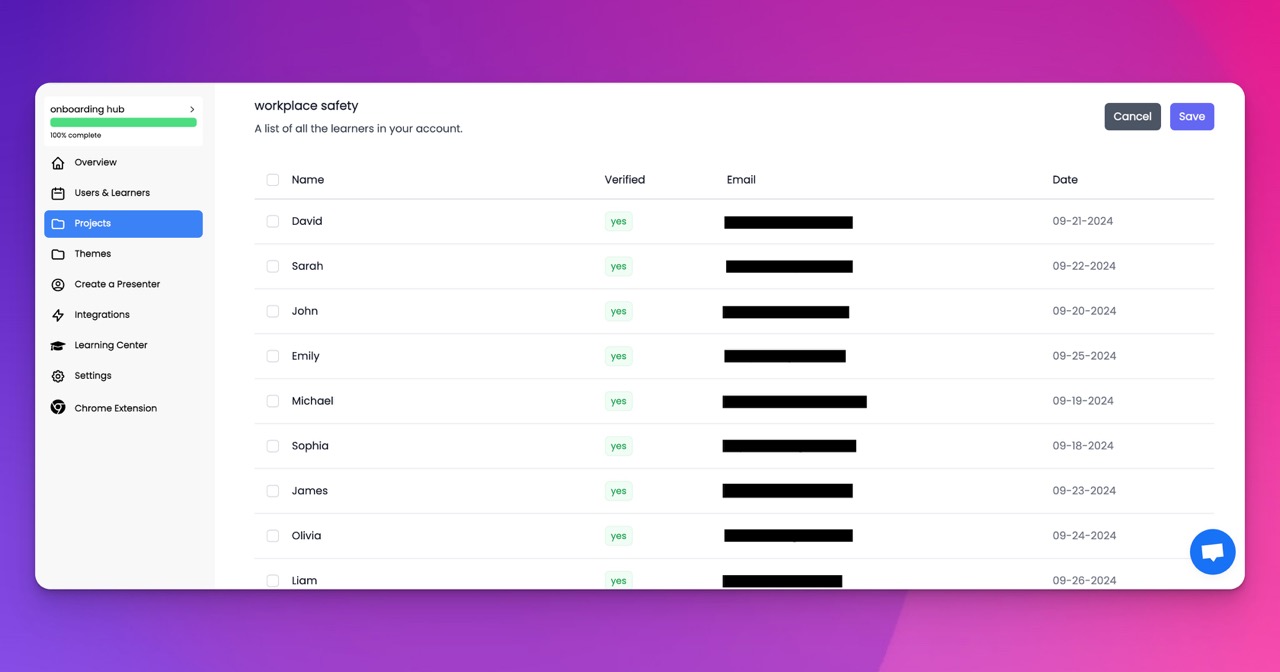🎉 Trainday now integrates with Zendesk and Hubspot 🎉 Trainday now integrates with Zendesk and Hubspot 🎉 Trainday now integrates with Zendesk and Hubspot
🎉 Trainday now integrates with Zendesk and Hubspot
🎉 Trainday now integrates with Zendesk and Hubspot
Contact
Cruise Lines
Creating Engaging Employee Training Programs in Cruise Lines
Revolutionizing Employee Training Programs in Cruise Lines: The Power of Data and Artificial Intelligence
Cruise lines are renowned for their exceptional customer service and unforgettable experiences. To achieve this level of excellence, it is crucial to have a highly skilled and motivated workforce. Traditionally, training programs in the cruise industry have been time-consuming and expensive. However, with the advent of data and artificial intelligence (AI), cruise lines can now create employee training courses that are not only relevant but can be developed rapidly. In this blog post, we will explore how data and AI are transforming the creation of engaging employee training programs in cruise lines, enabling them to stay ahead in a fast-paced industry.
1. Identifying Training Needs through Data Analysis:
Data plays a pivotal role in understanding the specific training needs of cruise line employees. By analyzing data collected from various sources such as customer feedback, employee performance metrics, and industry trends, cruise lines can gain valuable insights into areas that require improvement. These insights help in designing targeted training programs that address specific skill gaps, resulting in a more efficient use of resources and a better-trained workforce.
2. Customizing Training Courses with AI Technology:
Artificial intelligence has revolutionized the way training courses are developed by enabling customization and personalization. AI-powered algorithms can analyze employee data, learning preferences, and job roles to create tailored training programs. By providing employees with training content that is relevant to their roles and individual learning styles, cruise lines can boost engagement and ensure that employees acquire the necessary skills efficiently.
3. Rapid Development of Training Content:
In the fast-paced cruise industry, time is of the essence. With AI-powered tools, cruise lines can expedite the development of training content. Natural Language Processing (NLP) algorithms can convert existing training materials, manuals, and documents into interactive e-learning modules. This saves time and effort, allowing companies to roll out training courses more quickly, ensuring employees are up-to-date with the latest industry practices.
4. Enhancing Training Engagement with Gamification:
Gamification is an effective technique that uses game elements to engage and motivate employees during training. By leveraging AI, cruise lines can incorporate gamification features into their training programs. AI algorithms can analyze employee performance in real-time and provide personalized feedback and rewards. This not only increases engagement but also encourages healthy competition among employees, driving them to achieve higher levels of proficiency.
5. Continuous Learning and Adaptive Training:
Data and AI also facilitate continuous learning and adaptive training. By collecting and analyzing data on employee performance, cruise lines can identify areas where employees may need additional training or reinforcement. AI algorithms can then dynamically adjust the training content to focus on specific areas of improvement, ensuring that employees receive ongoing development opportunities tailored to their individual needs.
Conclusion:
The integration of data and artificial intelligence has revolutionized the creation of engaging employee training programs in cruise lines. By leveraging data analysis, customization, rapid development, gamification, and continuous learning, cruise lines can now provide relevant training courses in record time, ensuring that their workforce remains highly skilled and adaptable in the ever-changing cruise industry. Embracing these technological advancements will undoubtedly empower cruise lines to enhance customer satisfaction, drive employee performance, and maintain their competitive edge in the market.
Accelerate Compliance.
Deliver OSHA-Ready Courses Instantly.
Empower your team with data-driven training solutions tailored to your industry's safety standards. Stay compliant, reduce risks, and boost productivity with AI-powered course creation.
